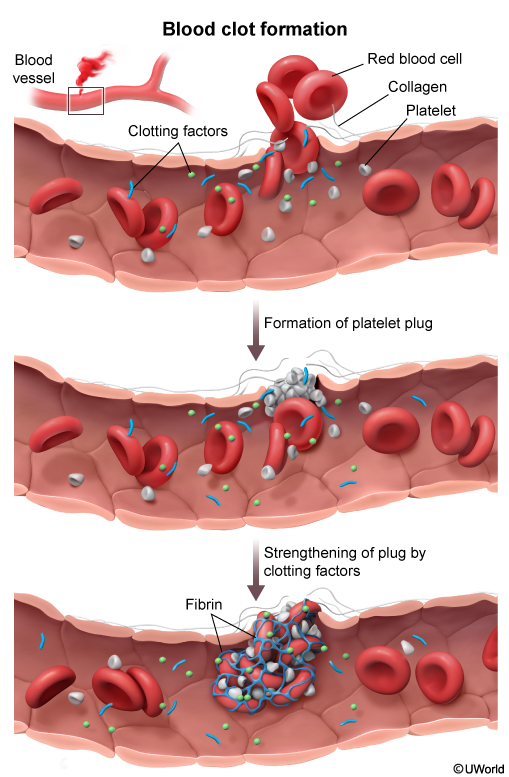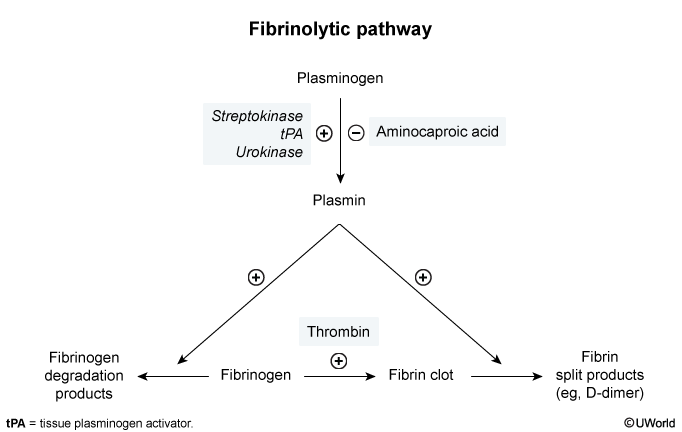Antifibrinolytic Agents
Article Sections
Introduction
Antifibrinolytic agents are a class of drugs used to treat and prevent severe bleeding. They work by inhibiting enzymes that normally degrade clots. Therefore, antifibrinolytic agents stabilize existing clots and reduce bleeding. The 2 most commonly prescribed antifibrinolytic agents are tranexamic acid (TXA) and epsilon-aminocaproic acid (EACA).
Pathophysiology of fibrinolysis
Following vascular injury, hemostasis leads to the formation of a fibrin clot (Figure 1). As wound healing occurs, the clot dissolves through a process known as fibrinolysis (Figure 2). The main component driving fibrinolysis is plasminogen, which is converted to its active form (plasmin) by specific enzymes (ie, tissue plasminogen activator [tPA], urinary plasminogen activator [uPA] [also known as urokinase]). Plasminogen binds lysine residues, which are found throughout the fibrin structure. On conversion to plasmin, plasminogen lyses fibrin, shredding it into soluble fibrin split products. These small pieces can be detected in the blood (ie, D-dimer), confirming recent or ongoing coagulation and fibrinolysis.
Continue Learning with UWorld
Get the full Antifibrinolytic Agents article plus rich visuals, real-world cases, and in-depth insights from medical experts, all available through the UWorld Medical Library.
Figures

